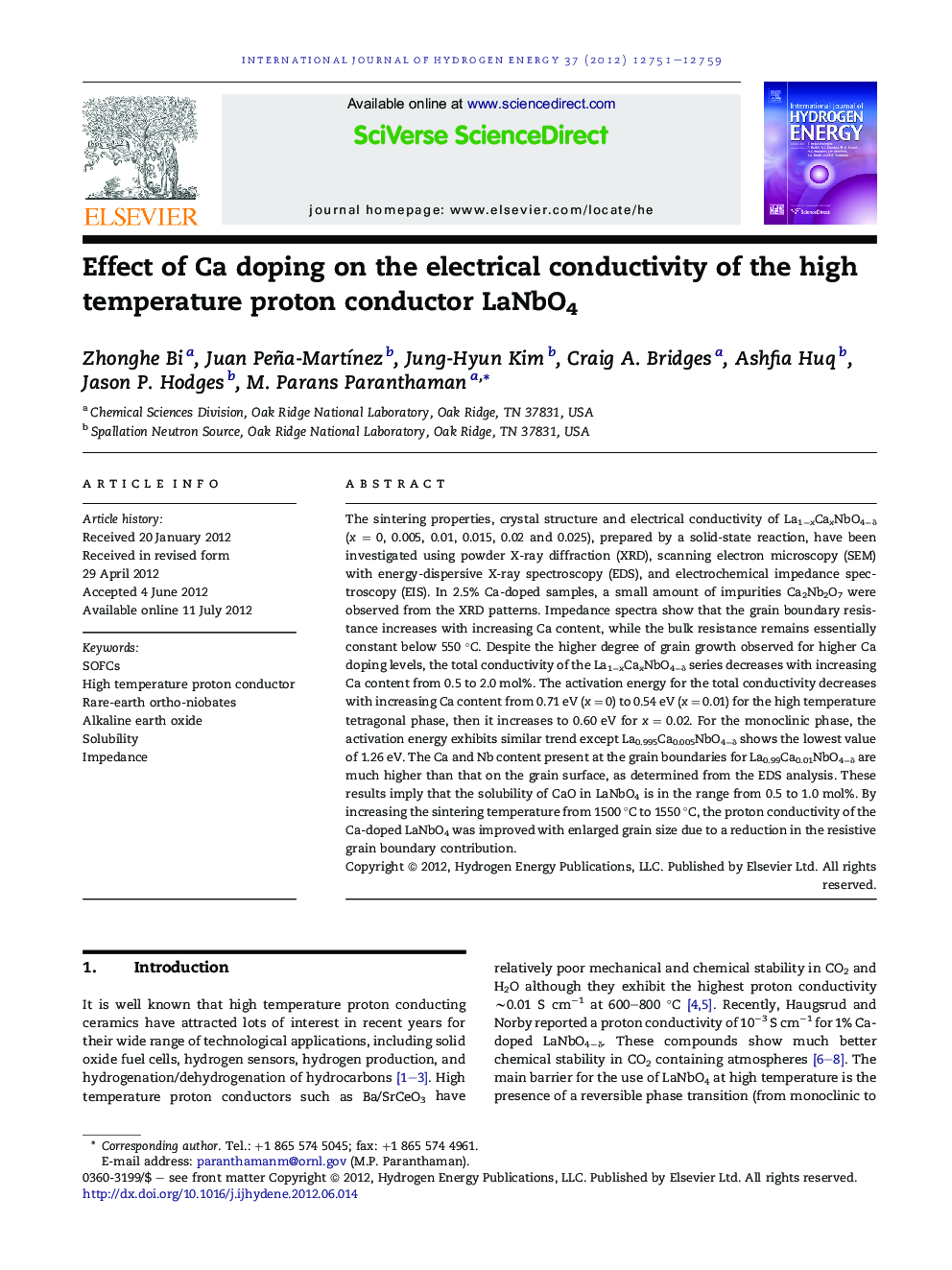| Article ID | Journal | Published Year | Pages | File Type |
|---|---|---|---|---|
| 1271114 | International Journal of Hydrogen Energy | 2012 | 9 Pages |
The sintering properties, crystal structure and electrical conductivity of La1−xCaxNbO4−δ (x = 0, 0.005, 0.01, 0.015, 0.02 and 0.025), prepared by a solid-state reaction, have been investigated using powder X-ray diffraction (XRD), scanning electron microscopy (SEM) with energy-dispersive X-ray spectroscopy (EDS), and electrochemical impedance spectroscopy (EIS). In 2.5% Ca-doped samples, a small amount of impurities Ca2Nb2O7 were observed from the XRD patterns. Impedance spectra show that the grain boundary resistance increases with increasing Ca content, while the bulk resistance remains essentially constant below 550 °C. Despite the higher degree of grain growth observed for higher Ca doping levels, the total conductivity of the La1−xCaxNbO4−δ series decreases with increasing Ca content from 0.5 to 2.0 mol%. The activation energy for the total conductivity decreases with increasing Ca content from 0.71 eV (x = 0) to 0.54 eV (x = 0.01) for the high temperature tetragonal phase, then it increases to 0.60 eV for x = 0.02. For the monoclinic phase, the activation energy exhibits similar trend except La0.995Ca0.005NbO4−δ shows the lowest value of 1.26 eV. The Ca and Nb content present at the grain boundaries for La0.99Ca0.01NbO4−δ are much higher than that on the grain surface, as determined from the EDS analysis. These results imply that the solubility of CaO in LaNbO4 is in the range from 0.5 to 1.0 mol%. By increasing the sintering temperature from 1500 °C to 1550 °C, the proton conductivity of the Ca-doped LaNbO4 was improved with enlarged grain size due to a reduction in the resistive grain boundary contribution.
► La1−xCaxNbO4−δ (x = 0, 0.005, 0.01, 0.015, 0.02 and 0.025) as high temperature proton conductor. ► Ca2Nb2O7 impurity was observed in x = 0.025 sample. ► The Rgb increases with increasing Ca content, while Rbulk remains essentially constant. ► The solubility of CaO in LaNbO4 is in the range of 0.5–1.0 at%.
